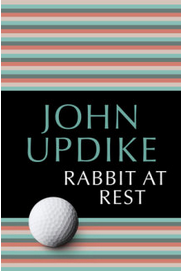 In an opening editorial for DIONYSOS: The literature and intoxication triquarterly Vol. 2:3 (Winter 1991), an issue now available online, Roger Forseth writes,
In an opening editorial for DIONYSOS: The literature and intoxication triquarterly Vol. 2:3 (Winter 1991), an issue now available online, Roger Forseth writes,
“Indeed, it was only a matter of time before journalism moved into fiction proper, and it is a pleasure to report that John Updike has found room in Rabbit at Rest (New York: Knopf, 1990) for his own version of the culture of addiction treatment. Harry ‘Rabbit’ Angstrom’s son Nelson, a ‘self-centered jerk’ (to use Ms. Vigilante’s term) if there ever was one, after snorting his mother’s inheritance, escapes gratefully into a Philadelphia treatment clinic. The reader is then treated to the high comedy of Nelson’s attempt to ‘share’ his recovery with his father.
“Updike’s account is pure Rabbit: “‘A day at a time,’ Nelson recites, ‘with help of a higher power. Once you accept that help, Dad, it’s amazing how nothing gets you down. All these years, I think I’ve been seriously depressed; everything seemed too much. Now I just put it all in God’s hands, roll over, and go to sleep. You have to keep up the program, of course. . . . I love counselling.’ He turns to his mother and smiles. ‘I love it, and it loves me.’ Harry asks him, ‘These druggy kids you deal with, they all black?’ . . . [Janice says] ‘I think for now, Harry. Let’s give Nelson the space. He’s trying so hard.’ ‘He’s full of AA bullshit'” (407-08).
“Harry Angstrom did not major in sensitivity, but Updike, through his creation of a redneck Childe Harold, is able to achieve in fiction a reality that the journalists can’t touch. — RF
